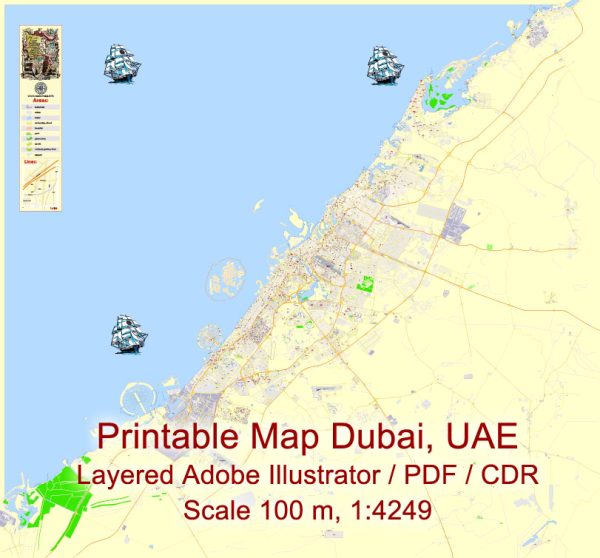Dubai, a city and emirate within the United Arab Emirates (UAE), has a rich history that dates back to ancient times. While it is best known today for its stunning modern architecture and economic prosperity, its history is steeped in tradition and culture. Here’s a brief description of Dubai’s history:
- Ancient History: The area that is now Dubai has a history dating back thousands of years. It was inhabited by various tribes, with the Bani Yas tribe being prominent in the region. These early inhabitants primarily relied on activities such as fishing, pearl diving, and trade.
- Rise of the Bani Yas: The Bani Yas tribe, led by the Al Maktoum family, gained prominence in the late 18th century. They settled in the area and established control over the region. This laid the foundation for the modern ruling dynasty of Dubai.
- Trading Hub: Dubai’s strategic location along the coast of the Arabian Peninsula and its natural harbor made it an ideal trading hub. By the 19th century, it had become a center for the pearl trade and was known for its bustling souks (markets).
- British Influence: In the late 19th century, Dubai, like other emirates in the region, entered into agreements with the British government to protect against piracy and external threats. These agreements were formalized in the form of the “Trucial States.”
- Oil Discovery: In 1966, oil was discovered in the Dubai emirate, transforming its economy and fortunes. The oil revenue allowed for massive infrastructure development and urbanization.
- Union with the UAE: On December 2, 1971, Dubai joined six other emirates to form the United Arab Emirates (UAE), an independent nation. The visionary leadership of Dubai, particularly that of Sheikh Rashid bin Saeed Al Maktoum, played a significant role in shaping the modern UAE.
- Rapid Modernization: Dubai experienced a massive transformation in the latter half of the 20th century and early 21st century. The emirate’s leadership made substantial investments in infrastructure, tourism, and diversification of the economy, with a focus on trade, tourism, and finance.
- Landmark Developments: Dubai is famous for its iconic modern landmarks, including the Burj Khalifa (the world’s tallest building), Palm Jumeirah (an artificial island), Burj Al Arab (a luxury hotel), and many more.
- Tourism Hub: Dubai has become a global tourism destination, attracting visitors from around the world. It offers a blend of traditional Arabic culture and the glitz and glamour of a modern metropolis.
- Diverse Population: Dubai is known for its diverse population, with people from all over the world coming to live and work in the city. This multiculturalism has contributed to its dynamic and cosmopolitan character.
Today, Dubai stands as a symbol of economic prosperity and modernity in the Middle East, while also preserving its rich heritage and culture. The city continues to evolve and thrive as it builds its reputation as a global business and tourism center.


 Author: Kirill Shrayber, Ph.D.
Author: Kirill Shrayber, Ph.D.